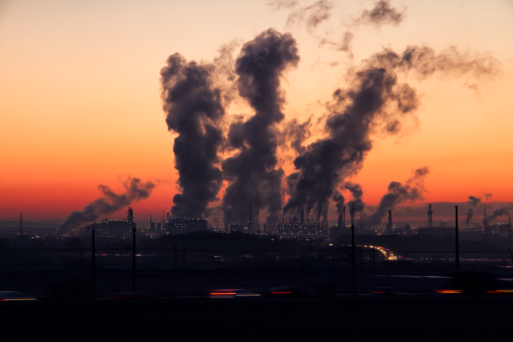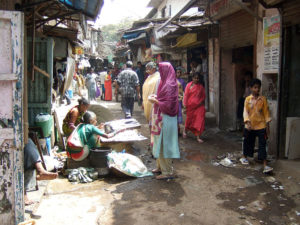A new report released by The Lancet has linked pollution of all kinds to roughly 9 million deaths in 2015. This equates to about 16 percent of total deaths worldwide, with air pollution contributing to the most deaths (6.5 million). Water (1.8 million) and workplace-related (0.8 million) pollution ranked second and third for causes of premature, pollution-induced deaths around the world.
 To put that in perspective, pollution was the underlying cause of death for three times as many people as AIDS, tuberculosis and malaria combined. The 9 million mark also means that pollution of all kinds caused 15 times more premature deaths than all wars and other forms of violence in the same year.
To put that in perspective, pollution was the underlying cause of death for three times as many people as AIDS, tuberculosis and malaria combined. The 9 million mark also means that pollution of all kinds caused 15 times more premature deaths than all wars and other forms of violence in the same year.
The Lancet’s Commission on Pollution and Health found that a majority of these deaths were caused by non-transmittable diseases such as heart disease, lung cancer, stroke and chronic obstructive pulmonary disease (COPD). Nearly all of the deaths (92 percent) occurred in low and middle-income countries. Impoverished and marginalized people were most affected, regardless of where they lived.
Nations attempting to industrialize swiftly (such as India, China, Pakistan and Bangladesh) proved to be the hardest hit. One in four deaths in these quickly industrializing countries could be linked to water, air, soil, chemical or other types of contamination. The highest number of deaths from pollution in 2015 occurred in India (2.5 million) and China (1.8 million).
“Pollution is much more than an environmental challenge,” said Commission co-lead Philip Landrigan. “It is a profound and pervasive threat that affects many aspects of human health and well being. It deserves the full attention of international leaders, civil society, health professionals, and people around the world.” Landrigan is a professor of preventative medicine and pediatrics at Icahn School of Medicine at Mount Sinai in New York.
“Tradition” And Modernity
The ways in which pollution affects a population vary depending on the industrialization of the country in question.
For instance, Landrigan points out that very poor countries actually have fewer pollution-related deaths than lower-to-middle income countries. This is largely because rapidly industrializing nations are hit by urban-industrial and chemical air pollution, not “traditional” pollution.
“Traditional” pollution arises at the household level. It is associated with extreme poverty, and is most commonly the product of poorly-ventilated stoves and fecal contamination of drinking water. Modern pollution, on the other hand, includes outdoor air, chemical, soil and job-related pollution. Deaths related to these modern forms increase every year.
The data from this report come from two reliable sources, according to Landrigan: The World Health Organization (WHO) and The Institute for Health Metrics and Evaluation at the University of Washington in Seattle. The data, collected by satellites and other monitoring devices, provide researchers with more information than past studies ever have.
“For the first time,” said Landrigan, “we pulled out and collected in one place all of the information on deaths caused by all forms of pollution combined — in other words, air… water…chemical…soil…and occupational pollution in the workplace — and put it all together.”
Environmental Injustice
As noted, pollution and its effects on developing nations is extraordinary. And a major cause of this is what the authors of the report call “environmental injustice,” which happens because these developing nations have very loose environmental regulations or none at all.

Developing nations suffer most from pollution-induced deaths
Credit: wikimediacommons
For example, roughly 2 million tons of new asbestos is produced every year, according to Landrigan. But asbestos is banned in most developed countries due to its carcinogenic qualities. So most of the newly-manufactured asbestos is sent to poorer countries who have little-to-no regulations against it.
Pesticides and the international trade of old materials like computers, cell phones and TVs also contribute to environmental injustice. These products are known to cause disease and cancer, so the developed world ships these contaminants to poorer nations, negatively affecting those communities.
Going forward, authors of the study hope that pollution will become a greater part of the global policy agenda.
“When you look at the time in the US since 1970, the year of the passage of the Clean Air Act,” said Landrigan, “air pollution in the US has come down by 70 percent. At the same time, GDP has increased by 250 percent.”
They’d also like to see experts from developed nations assist developing nations in limiting the negative impacts of advanced technology. Additionally, Landrigan and his colleagues have developed an interactive website that tracks progress on global pollution.

 Pollution Linked to 9 Million Deaths in 2015, Study Shows
Pollution Linked to 9 Million Deaths in 2015, Study Shows



 The Spiritual Symbolism of Cardinals
The Spiritual Symbolism of Cardinals
 Meaning-Focused Grief Therapy: Imaginal Dialogues with the Deceased
Meaning-Focused Grief Therapy: Imaginal Dialogues with the Deceased














